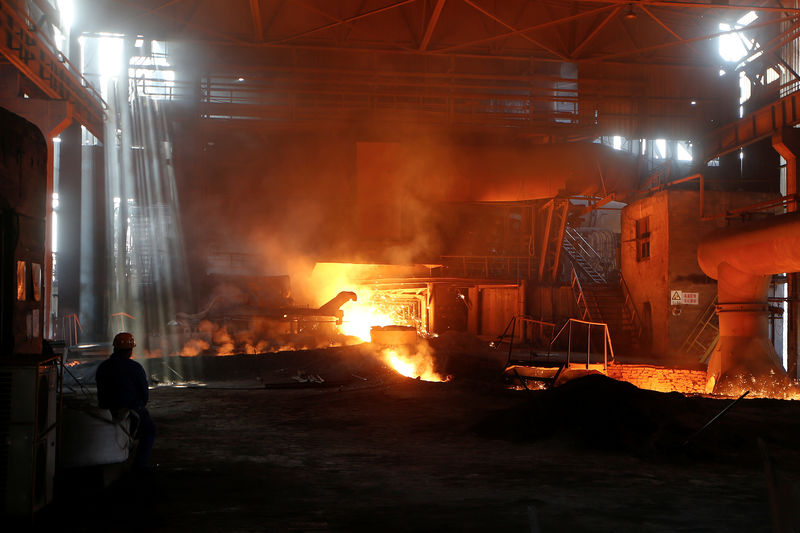(The opinions expressed here are those of the author, a columnist for Reuters.)
By Clyde Russell
LAUNCESTON, Australia, June 6 (Reuters) - China's iron ore imports so far this year have been remarkably stable, especially when viewed against the backdrop of prices that surged to a 30-month high early in 2017 before falling back into a bear market.
Iron ore prices in China have plunged in recent weeks, reversing more than half of a 130 percent rally from the end of 2015 to a peak in March this year.
SGX iron ore SGXIOSc1 , which mirrors the spot price, ended at $55.35 a tonne on Monday, down 38 percent from a high of $90.16 on March 16, but still well above $39.58 at end-2015.
The decline in the main Chinese domestic benchmark futures on the Dalian Commodity Exchange DCIOcv1 hasn't been quite as dramatic, with the contract closing at 435.5 yuan ($64) a tonne on Monday, down 32 percent from a peak of 636.5 yuan on Feb. 21.
But this price volatility hasn't been reflected in imports by China, which buys two-thirds of global seaborne iron ore.
China's seaborne imports were 85.8 million tonnes in May, according to vessel-tracking and port data compiled by Thomson Reuters Supply Chain and Commodity Forecasts.
Preliminary official data is likely to be released in the next few days, and while the ship data doesn't exactly align with customs figures, it has been an accurate pointer and is generally slightly more conservative than the customs data.
If the official numbers are in line with the vessel-tracking forecast, it would represent a modest increase on April's customs imports of 82.23 million tonnes of iron ore.
Using the vessel-tracking data shows a remarkable consistency of the imports so far this year, especially when calculated on a daily basis.
January's daily imports were 2.72 million tonnes, February's 2.71 million, March's 2.79 million, April's 2.74 million and May's 2.77 million.
FUNDAMENTALS RE-ASSERTING?
What the data shows is that the volatility in prices wasn't related to the fundamentals of supply and demand, rather it was largely due to sentiment and investor speculation.
Prices were driven higher as investors took the view that the Chinese government was working to boost spending on infrastructure and construction, main consumers of the steel that iron ore is used to produce.
While there was some justification for this view, it's also the case that the market rallied too hard and too quickly, and then tried to ignore the warning signs for too long.
Among the signals that the rally was overblown was the surge in China's iron ore port inventories to record highs and signs of some tightening of monetary conditions in China, a process that normally crimps commodity demand growth.
The question now is whether the iron ore market in China is close to reverting to trading on supply and demand fundamentals, or whether there is still froth to come out of prices.
The consensus of analysts certainly appears to be that the market is close to trading on fundamentals, with a Reuters survey showing the median expectation is for prices to stay close to current levels over the rest of 2017. median forecast for the spot price of 62 percent iron ore on a cost and freight basis into China was $62 a tonne for the third quarter and $58 a tonne for the fourth.
These forecasts are slightly higher than the current spot price, but generally fit well with a "steady-as-she-goes" scenario for Chinese iron ore imports.
The price forecast seems to recognise that China's demand for imported iron ore is growing at a modest and consistent pace.
<^^^^^^^^^^^^^^^^^^^^^^^^^^^^^^^^^^^^^^^^^^^^^^^^^^^^^^^^^^^ Graphic of China iron ore imports vs. SGX price:
http://tmsnrt.rs/2rY7Qkd
^^^^^^^^^^^^^^^^^^^^^^^^^^^^^^^^^^^^^^^^^^^^^^^^^^^^^^^^^^^> (Editing by Tom Hogue)
